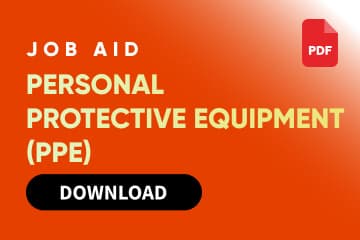Personal Protective Equipment (PPE) Overview
Certificate Of Completion
Duration: 32 Minutes
Other Languages: Canadian French, Chinese, Dutch, French, German, Italian, Japanese, Korean, Portuguese, Spanish
Level: Certificate
Introduction
This online program provides a comprehensive introduction to Personal Protective Equipment (PPE) and its critical role in workplace safety. Learners will explore different types of PPE, proper selection, use, and maintenance practices. The course also covers hazard control methods, employer and employee responsibilities, and how to ensure PPE fits and functions correctly. By the end, participants will be equipped to make informed decisions about using PPE and also earn a certificate of completion.
Features
- 24/7 Course Access
- Certification Upon Completion
- Mobile and Desktop Compatibility
- Self-Paced Learning Modules
- Comprehensive Course Material
Objectives
Audience
Outline
Exam Info
Frequently Asked Questions
When must hearing protection be worn in the workplace?
Hearing protection is required when noise levels reach or exceed 85 decibels (dB) over an 8-hour time-weighted average. Common sources include heavy machinery, power tools, and industrial processes. Employers must provide protection and training when this threshold is met.
How often should PPE be inspected for damage or wear?
PPE should be inspected before each use and routinely during scheduled maintenance checks. Look for cracks, tears, corrosion, or other signs of wear that could compromise protection. Damaged PPE must be repaired or replaced immediately.
What type of glove should be used when handling strong chemicals?
When working with strong chemicals, gloves made from nitrile, neoprene, or butyl rubber are often appropriate. The glove material should be chosen based on the chemical compatibility chart provided by the manufacturer. Using the wrong glove type can result in chemical burns or exposure.
Why is respirator fit testing required before use?
Fit testing makes sure that a respirator forms a proper seal on the user’s face, preventing hazardous particles or gases from leaking in. Without a proper fit, even a high-quality respirator may fail to protect the worker. OSHA requires fit testing before initial use and annually thereafter.
Personal Protective Equipment (PPE) Overview
top rated
Customer rating
Includes:
Certificate Of Completion
Group Discount
We Accept
Group Discount for Corporate Accounts

